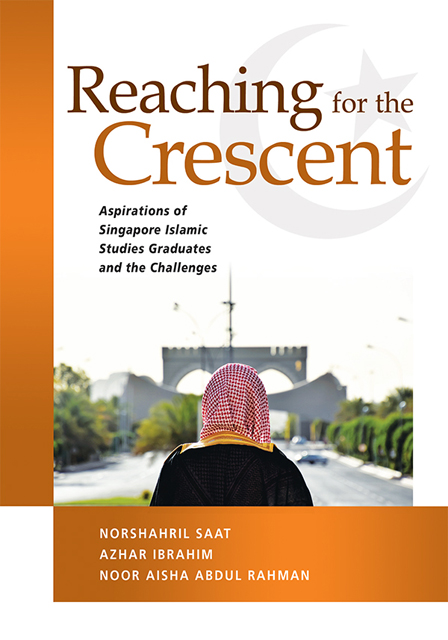Book contents
- Frontmatter
- Contents
- Preface
- Abbreviations and Acronyms
- A Note on Translation, Spelling and Other Conventions
- 1 Introduction
- 2 Overview of Islamic Studies and Mode of Thinking
- 3 Singapore Islamic Studies Graduates: Learning Experience and Struggles
- 4 Current Islamic Studies Undergraduates: Navigating Uncharted Pathways
- 5 Challenges, Genesis and Prospects for Development
- 6 Religious Education, Dominant Religious Orientations and Their Impact
- 7 Conclusion
- 8 Bibliography
- Index
- About the Authors
3 - Singapore Islamic Studies Graduates: Learning Experience and Struggles
Published online by Cambridge University Press: 01 September 2023
- Frontmatter
- Contents
- Preface
- Abbreviations and Acronyms
- A Note on Translation, Spelling and Other Conventions
- 1 Introduction
- 2 Overview of Islamic Studies and Mode of Thinking
- 3 Singapore Islamic Studies Graduates: Learning Experience and Struggles
- 4 Current Islamic Studies Undergraduates: Navigating Uncharted Pathways
- 5 Challenges, Genesis and Prospects for Development
- 6 Religious Education, Dominant Religious Orientations and Their Impact
- 7 Conclusion
- 8 Bibliography
- Index
- About the Authors
Summary
Introduction
The previous chapter examines prevalent types of Islamic education found in the religious educational landscape in the Muslim world. It highlights the dominance of the confessional type that has remained influential in religious teaching and learning. The salient traits of dominant modes of religious orientations evident in these institutions vis-a-vis competing ones, factors conditioning them and their ramifications on the nature of Islamic studies programmes were also examined.
While the types and orientations of religious education have direct implications on conditioning the religious outlook of graduates with ramifications on the well-being of the community and larger society, there remains a lack of serious discourse shedding insights into why Singapore’s religious studies graduates have chosen to study religion in the selected universities abroad, the kinds of religious education which they have obtained from abroad, the impact of dominant religious orientations which permeate the culture of teaching and learning in the institutions they attended on the formation of their religious outlook and perspectives, the problems and challenges they encountered in the course of their learning and upon returning from abroad.
Yet, dominant discourse on religious studies graduates persistently reveal two major issues of concern: the need for asatizah to contextualize religious teachings to the condition of Singapore society and the imperative to professionalize them through upskilling training programmes that will equip them for employment relevant to the needs of the community and larger society. The rise of radicalism and terrorism in the name of Islam globally and in the region, which has generated much discourse on its potential adverse ramifications on social cohesion of the nation, underscores these concerns. President Halimah Yacob’s speech at the meeting with Singapore’s religious studies students studying in Kuwait while on an official visit there in November 2019 encapsulates these concerns. Her advice to asatizah to the effect that they must adapt what they had learnt in Kuwait to promote social cohesion in multiracial and multi-religious Singapore resonates with such concerns (Koh 2019, A12).
Though data on asatizah are pertinent in understanding current problems in religious education and planning for its progress that will serve the needs and conditions of the Muslim community and the country while improving asatizah’s development, these remain scarce, disparate and fragmented, not easily accessible.
- Type
- Chapter
- Information
- Reaching for the CrescentAspirations of Singapore Islamic Studies Graduates and the Challenges, pp. 36 - 80Publisher: ISEAS–Yusof Ishak InstituteFirst published in: 2023

